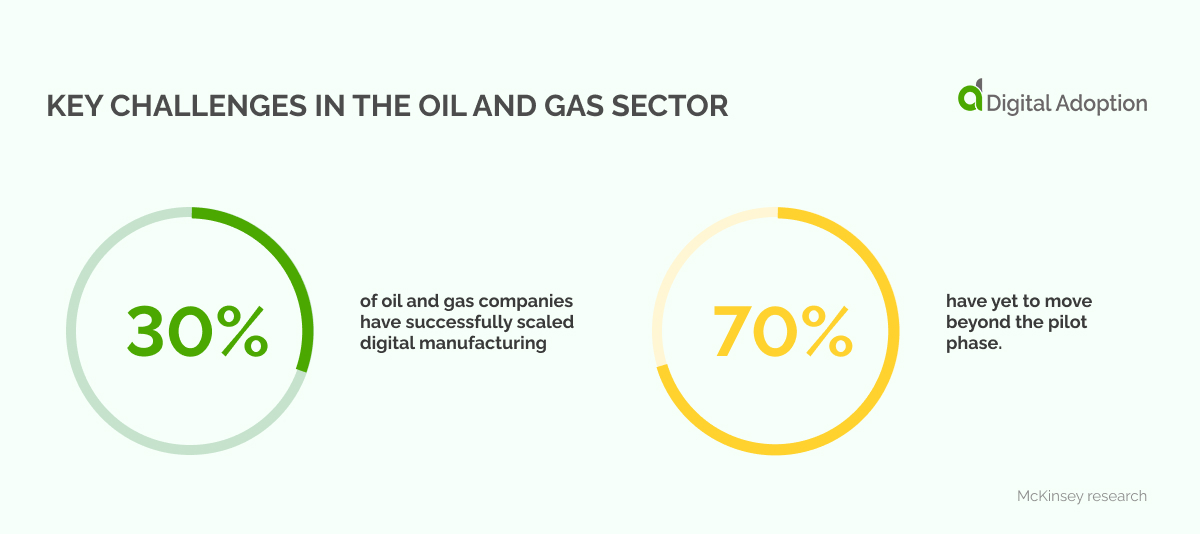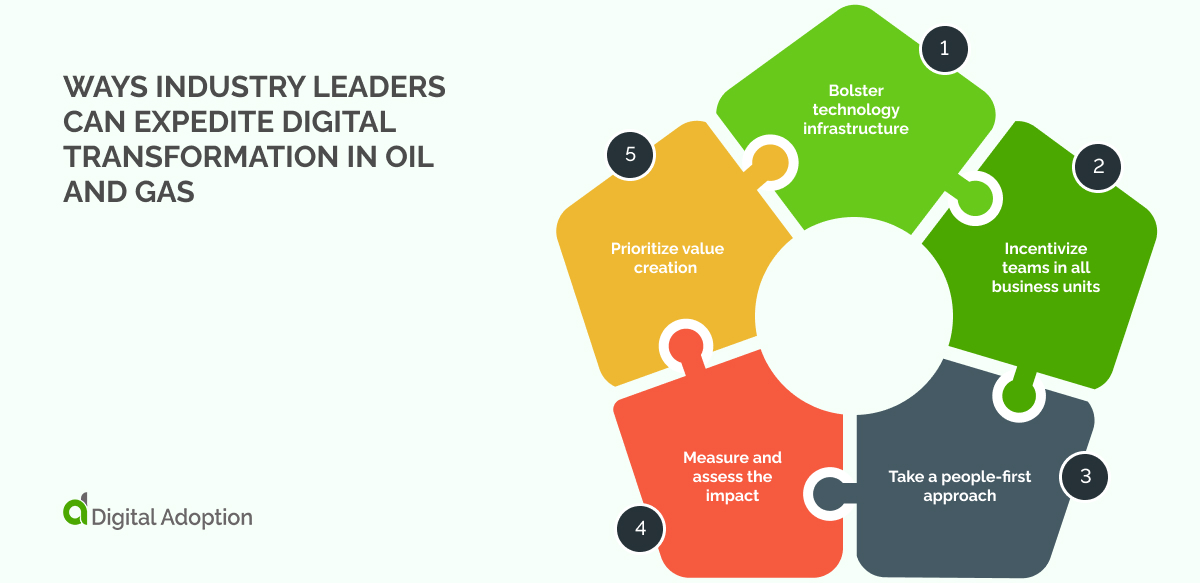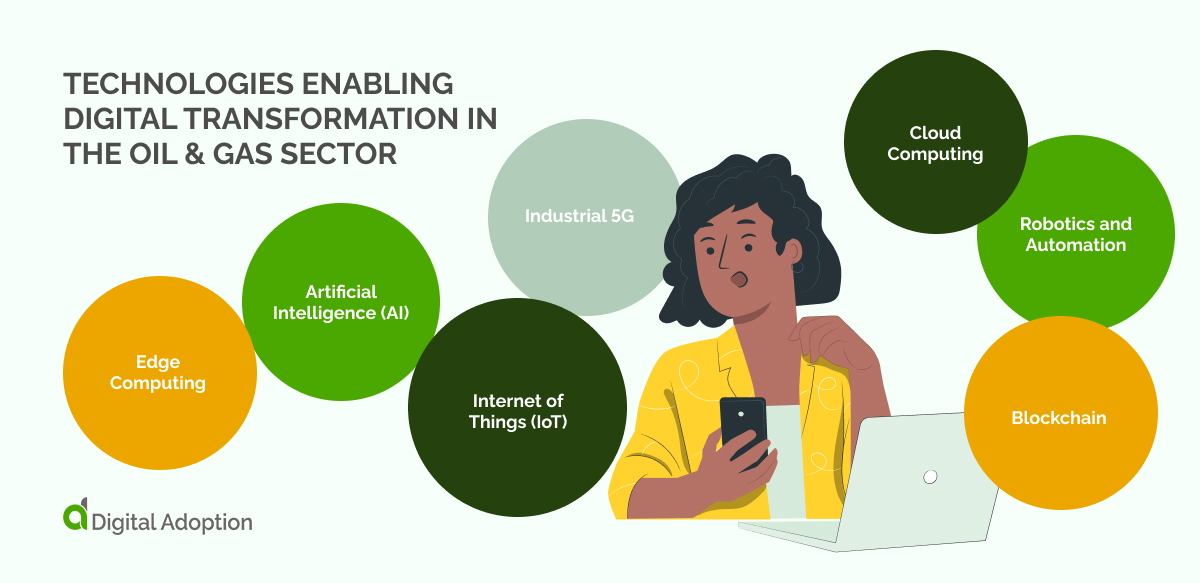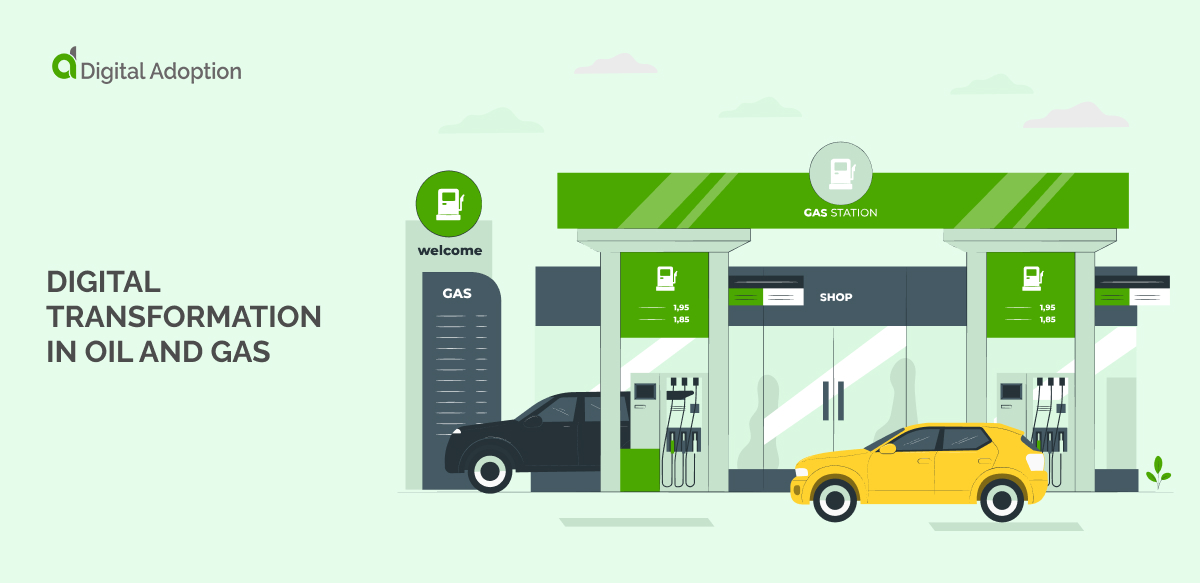Similar to the current digital transformation and technology boom reshaping business and social ecospheres globally, the oil and gas boom beginning in the early 20th century was and remains a disruptive global phenomenon.
However, the oil and gas sector, traditionally slower to adopt new technologies, is now playing catch-up in the digital transformation race.
Faced with volatile commodity prices, environmental concerns, and evolving regulatory landscapes, the oil and gas industry is increasingly leveraging technology to boost operational efficiency, reduce costs, improve safety, and act more sustainability.
Accenture’s research reveals that 70% of leaders deem enterprise-wide transformation vital for competitiveness, claiming they plan some form of reinvention, whether radical, significant, or encompassing fundamental changes. Combatting carbon emissions with sustainable initiatives emerges as a major focus for top companies, with 92% setting net-zero targets.
The feverish digital adoption of disruptive tools and solutions across industries may best characterize contemporary digital transformation—however, this digital embrace only partly fuels these transformations.
Digital transformations have no end-state and should be viewed as more than simply procuring new technology but a catalyst for cultivating value across all business areas.
The digital revolution in the energy sector, characterized by adaptability, enables companies to optimize their operations and respond swiftly to changing market shifts.
According to Technavio, the digital transformation market in the oil and gas industry is anticipated to expand by USD 58.66 billion between 2022 and 2027, with a projected CAGR of 16.56%.
CIOs, CDOs, and other executive decision-makers must adopt a holistic approach to digital transformation, especially in the energy sector, where transformations are wide in scope.
From maximizing output in upstream oil production processes through advanced technologies to leveraging digital tools to mitigate disruptions in downstream supply chains, digitalization is empowering the industry arena.
In this article, we’ll explore digital transformation in the oil and gas sector. We’ll uncover its meaning, challenges, how industry leaders can expedite the process, and what the future holds. Stay tuned as we delve into this new digital era for oil and gas.
What is digital transformation in oil & gas?
Digital transformation in the oil and gas industry refers to integrating digital technologies into all business verticals, fundamentally changing how operations are conducted, and value is delivered.
It’s a shift from traditional methods towards smart, technology-driven approaches for empowering prospective business capabilities.
Exploiting digital tools and technologies in the oil and gas industry includes various innovative applications. For instance, artificial intelligence and machine learning are harnessed to predict equipment failures, minimizing downtime and boosting productivity.
Meanwhile, extended reality, such as augmented reality (AR) and virtual reality (VR), transforms training procedures, providing immersive experiences that enhance safety and operational effectiveness.
Moreover, field devices linked to the Internet of Things (IoT) are generating real-time data on an unparalleled scale, facilitating timely and precise decision-making. Big data analytics manages this immense data, extracting key insights that optimize production processes.
These digital transformations are revolutionizing the oil and gas industry, promising a future of efficiency, safety, and sustainable growth.
Key challenges in the oil and gas sector

McKinsey research shows that only 30% of oil and gas companies have successfully scaled digital manufacturing, and 70% have yet to move beyond the pilot phase.
It’s a counter-intuitive fact of change management that technology is only one part of digital transformation. But embedded organizational structures pose some notable problems on the path to digital maturity.
- The main hurdle is not technology but existing organizational structures. Changing ingrained practices and mindsets to adapt to new digital methods often proves difficult.
- Company leaders may see digital transformation as a series of separate tasks. However, new technologies should change how the business works and operates to reap the benefits of digital transformation.
- Even if management is convinced about the benefits of digital transformation, that enthusiasm might only transfer to employees, companies that invest heavily in training, consultation, and communication with staff are far more likely to succeed in their transformation.
- With the influx of real-time data from IoT devices, managing, analyzing, and extracting valuable insights from this vast amount of information can be challenging.
- To meet the specific needs of the oil and gas sector, it may take time to see how they will create value for the company. Risk-averse management teams will only invest in technologies if they can see the payoff in the long term.
- Merging new digital technologies with existing systems, especially Industrial Control Systems (ICS), can be complex. This could lead to operational difficulties, as ICS is crucial for controlling and managing core operations in the oil and gas sector. Ensuring seamless integration without disrupting these essential functions is a significant challenge.
- As the industry becomes more digitized, it becomes more vulnerable to cyber-attacks. Ensuring robust security measures are in place is a significant challenge.
Ways industry leaders can expedite digital transformation in oil and gas

If one thing’s clear, oil and gas leaders can no longer delay their technology strategies. Every company must make its unique plans for change. But there are several key areas that any energy organization needs to address to get started.
-
Bolster technology infrastructure
Investing in next-generation infrastructure is key to digital transformation success. With capabilities like Industrial 5G, Edge Computing, and Artificial Intelligence (AI), business units across an organization can find ways to improve their processes.
Communication infrastructure is a precious investment in the oil and gas industry. Extraction and exploration systems operate over a wide area, remote from conventional infrastructure. Industrial internet services connect different business segments seamlessly, removing unplanned miscommunications between business units.
-
Incentivize teams in all business units
Deciding on the right digital vision is not just a matter for a company’s IT teams, C-suite executives, or consultancies. Each team knows where to make cost savings through digital adoptions. When the plans for a digital strategy start with the employees on the ground, all staff will be incentivized in the hope of increased efficiency, streamlined processes, and a better employee experience.
In the energy industry, employees will only be motivated by digital maturity, organizational change, or global business needs. They will become involved in the process by showing them the new life a digital strategy can bring to their work.
-
Take a people-first approach
When staff hears that their employer wants to cut costs through organizational change, many will be concerned about keeping their jobs. Digital decision-makers will improve the situation by prioritizing existing staff in their organization. By building their capacity, empowering them to think critically, and offering opportunities for thorough training, oil and gas players demonstrate that employee effectiveness is part of the plan for achieving maximum value.
-
Measure and assess the impact
Oil and gas business leaders must gather precise information about digital adoption. A company only reaches digital maturity when staff can use their new tools with complete proficiency and customers benefit.
A digital adoption platform is one fundamental way of finding out real-time data about the use of technology in any company. With one convenient application, leaders can gather clear insights about the value that their investments are creating.
-
Prioritize value creation
Although this article has focussed on digital solutions, value creation must be central to implementing new technology. A cost-savings strategy should focus on creating value across the value chain. Businesses that focus on upstream oil processes can use new tools to optimize the price of every barrel of oil.
Further down the chain, technology can reduce supply chain disruptions and prevent the associated costs from building up. To create more value in oil and gas, it’s vital to ensure that technology solves the most fundamental problems in a given company. It’s only possible to apply digital solutions when they are needed.
Technologies enabling digital transformation in the oil & gas sector

Now firmly in the era of digital disruption, no industry remains untouched by its sweeping changes – and the oil and gas sector is no exception.
Technological advancements fundamentally reshape how oil and gas companies explore, extract, and process these vital resources. Let’s explore technologies enabling these transformations within the oil and gas sector. From AI to IoT to Big Data Analytics – these technologies are ushering in a new era for the oil and gas industry.
- Industrial 5G: Industrial 5G provides a high-speed, low-latency network with greater capacity for digital automation and a wide range of digital services and applications. This enables faster and more reliable digital communication between machines, equipment, and other devices.
- Edge Computing: Advancements in edge computing have helped reduce the need to process digital data in the cloud by bringing computation and storage to the network edge. Using edge computing, oil, and gas companies can process digital data faster and more efficiently.
- Artificial Intelligence (AI). AI-powered digital technologies are helping oil and gas companies to improve safety, reduce downtime, and increase efficiency. AI can be used for predictive maintenance, digital twinning, automated process control, and many other applications.
- Internet of Things (IoT): The IoT is revolutionizing the Oil and Gas industry by creating digital ecosystems where digital devices such as sensors, transmitters, and actuators can interact.
- Cloud Computing: Cloud computing enables oil and gas companies to store digital data and run applications on a remote server instead of installing, managing, and maintaining servers on-site. This reduces hardware costs and simplifies digital operations.
- Robotics and Automation: Robotics are naturally part of improving any heavy industrial process. For example, robotic arms can perform hazardous tasks on offshore oil platforms. Automated systems can be used for the digital control of complex processes. Research from Aptean indicates that digital transformation is a top priority for 66% of manufacturing companies. However, most are still executing their digital transformation strategies and determining the next operational areas to automate. Only 10% of North American process and discrete manufacturers have completed their digital transformation initiatives and reaped the associated benefits.
- Blockchain: The benefits of decentralized technology such as Blockchain offers secure digital data storage, asset protection, and transaction processing. This can help oil and gas companies increase transparency, reduce costs, and improve digital security.
The digital transformation of oil and gas
In this article, we’ve seen how digital transformation can be uniquely significant for the prospective development of oil and gas companies. Despite major oil and gas players’ challenges, they can access a range of proven technologies to enhance the solutions they offer the marketplace.
Of course, whatever business leaders do, there’s no doubt that time is running out for the oil industry. The catastrophic consequences of fossil fuel consumption are nearer than ever. And oil and gas industry leaders are responsible for supporting a truly sustainable energy transition.
The International Energy Agency reports that after a “4% drop in 2020, natural gas demand is expected to progressively recover in 2021 as consumption returns close to its pre-crisis level in mature markets….”
Aside from their moral obligations, oil companies won’t survive unless they adapt to radically new working conditions.
Fortunately, a digital transformation project is one-way businesses can remain agile and outmaneuver the competition. Technology helps to produce value across the energy sector, even in highly unpredictable circumstances.







![18 Examples of AI in Finance [2025]](https://www.digital-adoption.com/wp-content/uploads/2025/06/18-Examples-of-AI-in-Finance-2025-300x146.jpg)
![14 Examples of AI in Manufacturing [2025]](https://www.digital-adoption.com/wp-content/uploads/2025/06/14-Examples-of-AI-in-Manufacturing-2025-300x146.jpg)




